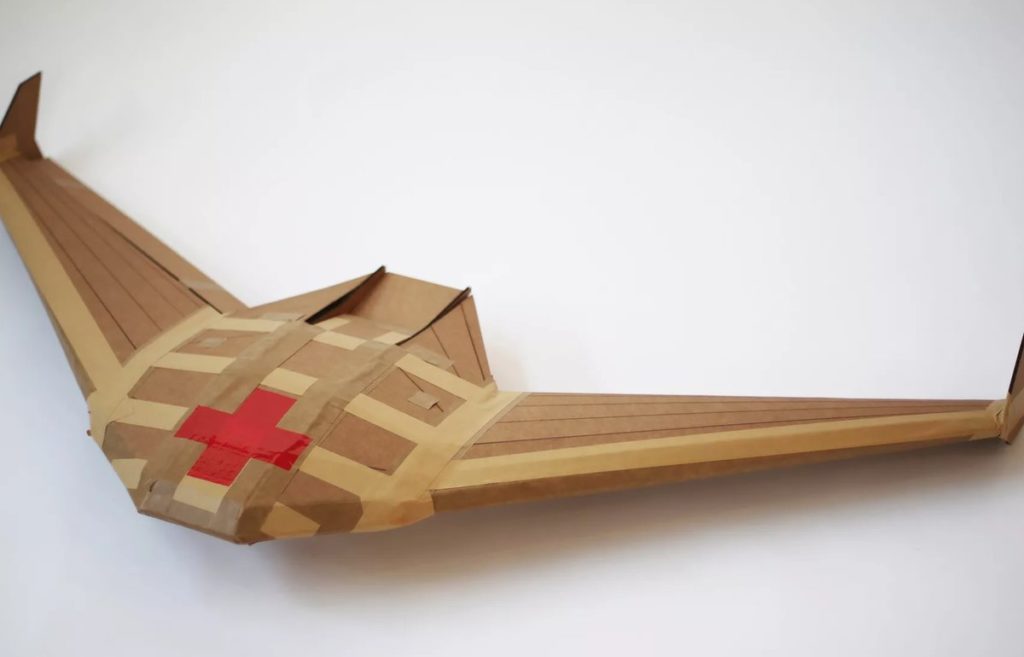
Disposable drones are the next big thing for the military. San Francisco-based OtherLab has developed a drone made of packing tape and cardboard as a prototype of a “vampire drone” made of fungus that can consume itself and disappear.
When DARPA announced that it was in search of a disposable drone, the idea seemed outlandish, if desirable. The initial solicitation says:
DARPA is seeking to develop autonomous, precision, air delivery vehicles that both safely deliver their package(s) and physically vanish, i.e. the vehicle’s physical disappearance is part of its mission specification. Such a system would enable efficient resupply to teams in distributed locations, eliminate the need to repack/pack-out delivery parachutes resupplying small operating forces downrange, and create a capability to safely, and without detritus, deliver time-critical humanitarian supplies (e.g. food, perishable medical supplies) to civilian/NGO personnel serving in remote or dangerous areas.
Since then, DARPA has provided funding for several companies under the solicitation. One of them, reports Air and Space Magazine, has designed a drone they’re calling APSARA, for Aerial Platform Supporting Autonomous Resupply/ Actions.
San Francisco-based research firm OtherLab designed the APSARA, which sounds friendlier than “Vampire Drones” – the common name for the program. APSARA drones are made almost totally of cardboard, with a bit of packing tape. They can be launched from another aircraft – the higher, the longer the flight – and they glide. The drones use GPS, autopilot, and a disposable battery: reportedly they offer a flight endurance of up to 150 kilometers – about 93 miles – and can land within 10 meters (about 32 feet) of their target. They can carry a payload of 1 kg.
While right now the design is of cardboard, the concept goes even further. The plan is to produce the drones from mycelium, a mushroom-based product with a similar texture to cardboard. The difference is in the disappearing. Mycelium can be impregnated with active spores that will eat the material, completely ingesting it within 5 or 6 days. The disappearing drone appears to have arrived.
Miriam McNabb is the Editor-in-Chief of DRONELIFE and CEO of JobForDrones, a professional drone services marketplace, and a fascinated observer of the emerging drone industry and the regulatory environment for drones. Miriam has penned over 3,000 articles focused on the commercial drone space and is an international speaker and recognized figure in the industry. Miriam has a degree from the University of Chicago and over 20 years of experience in high tech sales and marketing for new technologies.
For drone industry consulting or writing, Email Miriam.
TWITTER:@spaldingbarker
Subscribe to DroneLife here.